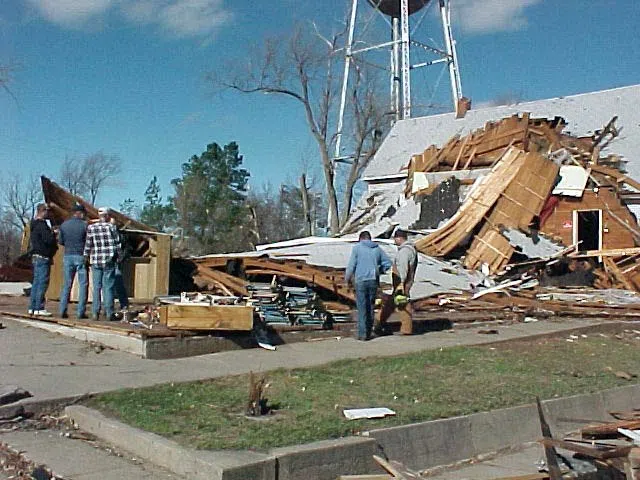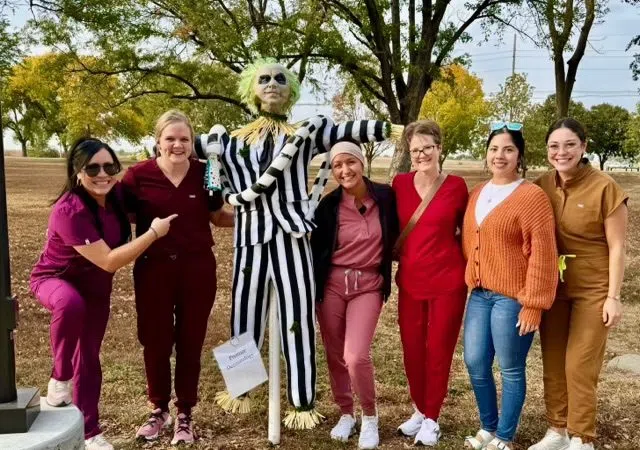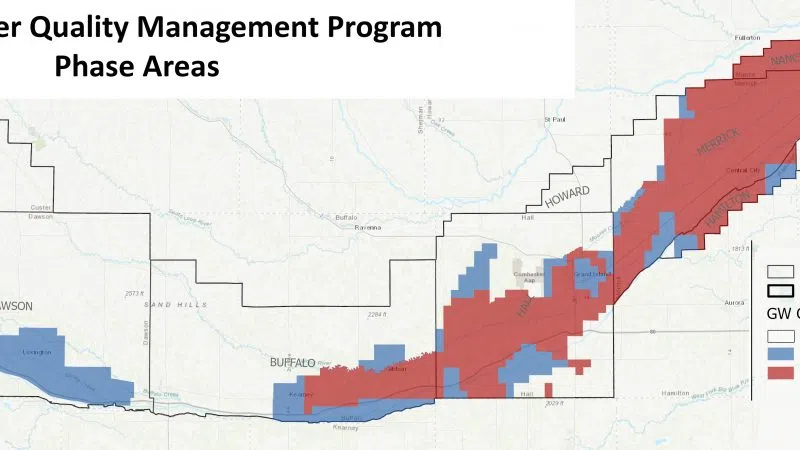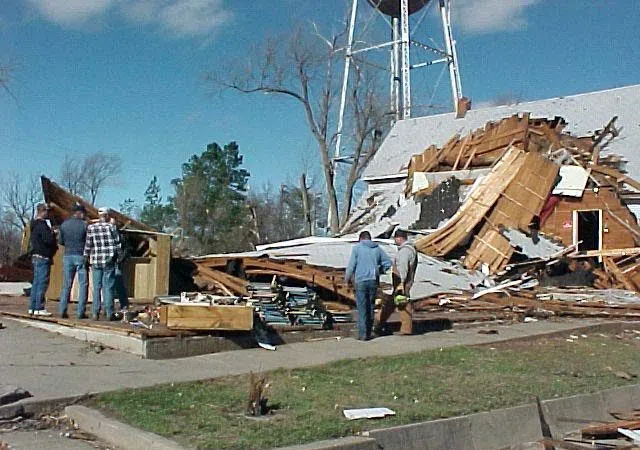
Damage in Oconto following the 2000 Halloween tornado, (NOAA, Courtesy)
OCTONTO — Severe weather can strike at anytime and this was on display during Halloween night in 2000 when the village of Oconto was impacted by a tornado that caused damage throughout the community.
“Witches and goblins gave way to Halloween severe weather warnings for residents of northwest Kansas, south-central and central Nebraska Tuesday evening. The severe weather caused property damage in a 200-mile path, but, thanks to NOAA’s National Weather Service warnings and quick action by local emergency managers and the public, there wasn’t a single injury reported,” per a NOAA report from Nov. 2, 2000.
“Moving mostly through lightly-populated rural areas, storms caused by a supercell thunderstorm moving in advance of a Plains cold front ranged from near the town of Colby in northwest Kansas to north-central Nebraska farmland. Tornadoes, high winds and large hail caused damage in Thomas, Decatur and Sherman counties in northwest Kansas then moved across Red Willow, Frontier, Dawson, Custer, Nemaha, Loup and Holt counties in Nebraska,” the NOAA report stated.
The hardest hit of the outbreak would be the village of Oconto in Custer County.
A tornado that had developed from the supercell would strike the town directly, including the community center where a Halloween party was being held. However, advanced warning allowed those present to shelter in the basement and all 19 children and four adults did not suffer any injury.
The tornado would destroy several downtown businesses and damage at least 40 homes.
“National Weather Service employees were busy the morning after Halloween examining a track of storm damage more than 200 miles long. Along the damage path, the Weather Service recorded 15 tornado reports, 48 reports of damaging hail and four reports of high winds,” the 2000 NOAA reported noted.
“Our forecasters in Goodland, Kansas; Hastings, and North Platte, Neb.; were able to track this storm system and provide life-saving warnings to farmsteads and communities for more than 200 miles,” Weather Service Central Region director Dennis H. McCarthy said from his Kansas City office in 2000. “The fact that tornadoes kept forming and dissipating over that much of two states with not a single injury being reported demonstrates how much attention Plains States emergency management agencies and residents pay to our weather warnings. It takes a tremendous partnership among the National Weather Service, emergency management and the public to attain that kind of safety success.”
“Preliminary assessments rated the Oconto tornado as an F-2 on the Fujita tornado rating scale, with vortex winds of 113-157 mph, according to meteorologist-in-charge David A. Wert at the North Platte Forecast Office. F-2 tornadoes have the power to rip roofs from well-constructed homes and to uproot large trees. Supercell storms have the potential of producing multiple tornadoes and causing other wind damage and severe weather over large distances, as occurred on Halloween 2000,” the NOAA report noted.
In 2003, a new community center was constructed using funds from federal, state, county, local sources.









